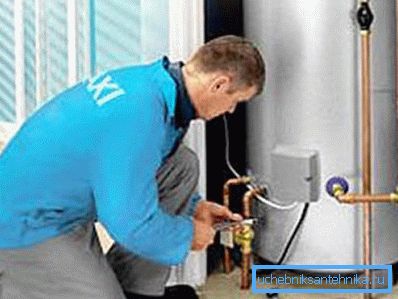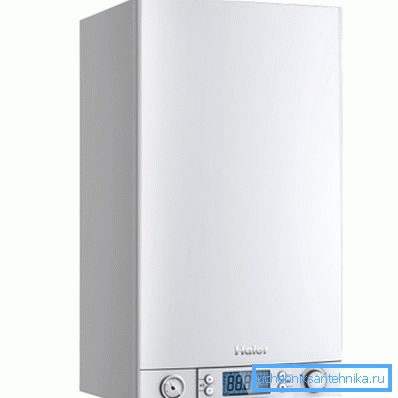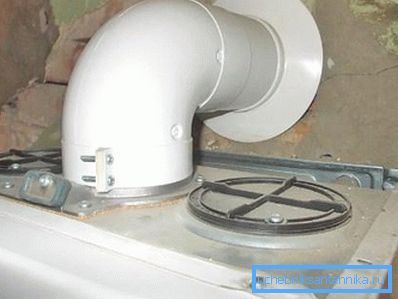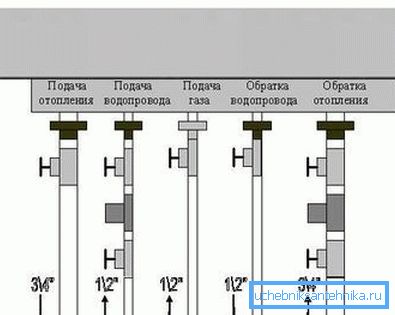Installation of gas heating boilers: 4 steps to warmth and
One of the most crucial steps in the design of the heating system of a private house is the installation of gas heating boilers. This stage is so important that it can be carried out only by specially trained employees of construction companies who have the appropriate permissions and certificates.
Nevertheless, the instruction describing the installation process is useful for you to control. In addition, some preparatory work can be done with your own hands, reducing cash costs.

Calculation of the required parameters
Boiler power
Before the installation of a gas heating boiler will be carried out, it is advisable to make engineering calculations on which you will need to rely when choosing a particular model of equipment.
These include:
- calculation of the power of the gas heating boiler;
- calculation of gas consumption for heating.
Note! From the correctness of these two indicators depends largely on how much money will go to pay for utilities. If the cost of operation is too high, you can consider other heating schemes: using electricity, solid fuel boilers, alternative energy sources, and so on.
If private housing was built according to a standard design with minimal changes, that is, the distance from the floor to the ceiling does not exceed three meters, then the calculation of the gas heating boiler is made using the following formula:
MK = S * CMP / 10, where:
- MK - power of installed equipment, kW;
- S - the area of heated premises, square. meters;
- The CMD is the specific power of the heater (this value depends on the climate zone and is calculated for every 10 square meters of space).
CMD for our country is assumed to be equal to the following values:
- for the south and adjacent regions - from 0.7 to 0.9 kW;
- for central Russia - from 1.0 to 1.2 kW;
- for regions and territories lying at the latitude of Moscow - from 1.2 to 1.5 kW;
- for the northern regions - from 1.5 to 2.0 kW.

Substituting the appropriate values in the formula for the calculation, we find that for heating an average-sized house, the area of which does not exceed 200 square meters. m., located in the middle lane, the necessary climatic equipment with a capacity of about 22 kW.
Remember that the numbers are for a single-circuit boiler. If your chosen model assumes simultaneous heating of water, the estimated power should be increased by about a quarter.
Fuel cost calculation
After determining the power of the equipment, it is necessary to calculate the gas for heating.
This is done as follows:
- boiler power is multiplied by the number of days in a month and the number of hours in a day;
22 kW * 30 days * 24 hours = 15840 kW / hour
- The obtained value should be divided in half, since any equipment does not work at maximum mode during the whole heating season;
15840 kW / h / 2 = 7920 kW / h
- this number should be multiplied by the number of months during which the house should be heated (in most cases, 7);
7920 kW / hour * 7 months = 55440 kW / hour
- one cubic meter of natural gas emits 10 kW of thermal energy, therefore, dividing the previous value by 10, we get the amount of fuel expended on heating;
55440 kW / h / 10 = 5540 cu. meters of gas
- multiplying this figure by the tariff that is set in your region, we get the cost in monetary terms.

Equipment installation
Step 1. Preparatory stage
First of all, it should be noted that the installation of any heating equipment is quite a laborious exercise, requiring the presence of a certain amount of knowledge, experience and tools.

In addition, the installation of gas heating, in accordance with applicable building codes and regulations, must be made by companies that have permits.
Note! These companies also carry out repair of gas heating boilers in case of breakdowns. Independent opening of decorative panels and making changes to the design of heaters is not allowed, as it may cause harm to human health and property.
Before buying a boiler, you must carefully inspect it for external defects, damages, make sure that there is no scrap and check the delivery set. For example, brackets should be attached to the heater, with which it is fixed on the wall.

Even when choosing, you should make sure that the equipment is suitable for use with a specific type of fuel. Thus, gas-fired units are not suitable for connection to liquefied gas cylinders. However, there are universal models where the burner can be upgraded.

Installation of a gas heating boiler must be carried out in rooms that meet the following requirements:
- air temperature from + 5 to + 35 degrees Celsius;
- humidity not more than 80%;
- the wall on which the wall model will be hung must be strong (fixing on a plasterboard or other partition is not allowed);
- it is desirable to protect the surface of the floor or wall on which the heater is mounted with a gasket made of non-combustible material;
- the minimum distance from the unit to the surface should not be less than 5 cm;
- it is imperative to consider where the chimney or coaxial pipe will be removed to remove combustion products;
- Electrical connection must be made to a grounded outlet and a circuit breaker that shuts off energy when overloads occur.
Step 2. Installation
Once again it should be recalled that the installation of gas-fired boilers can only be carried out after obtaining relevant permits from the company supervising the operation of such equipment.
The installation procedure for wall-mounted heating equipment consists of the following steps:
- Fastening should be done using self-tapping screws with a diameter greater than 6 mm.. They will need four pieces. Places for drilling holes are marked with a marker in the dimensions indicated in the drawing, included in the package.
Tip! Given the considerable weight of the boiler, it is advisable to install it not alone, but with the help of one or two assistants. Otherwise, you can drop the heater on the floor, causing damage.

- When choosing a place, it should be taken into account that the distance from the lower edge of the apparatus to the floor surface must be at least 80 cm, and from the side covers to the walls - at least 50 cm.
- After marking, drilling and installing dowels, you can attach the boiler. Before that, on its upper part you need to wear a cap, which serves as an adapter for the pipe. Also, be sure to avoid distortions. This will help ordinary building level.
- Certain types of equipment come with a parapet bracket. It needs to be installed first of all, and after that - the climatic equipment.

Step 3. Connect the water pipes
First of all, this section should be familiarized to the owners of double-circuit types of boilers, which, in addition to heating the coolant, provide residents with hot water.
The procedure for connecting pipelines is as follows:
- Plugs that protect the equipment from dust, debris and foreign objects are removed from the inlet and outlet pipes of the heater.
- The water supply hose must be connected using an angle filter element that retains solid particles that may be present in tap water.
- It is desirable to equip all entrances and exits of water with stop valves. In this case, you can easily disconnect the boiler from the water supply if necessary.
- If water with a high salt content flows in your water supply system, you should additionally use softeners, otherwise scale deposits inside the boiler can lead to premature breakage.

Step 4. Gas connection
This procedure is performed exclusively by gas service specialists. Otherwise, you can be fined, because you violate the current procedure for the operation of this kind of equipment.
Make sure that the following nuances are observed:
- connection is made using a rigid metal pipe;
- the joint must be equipped with a paronit gasket;
- You should also install an air analyzer that notifies the presence of gas in the room, a gas valve and a meter.

Conclusion
Remember that gas boilers, stoves and water heaters are related to equipment whose operation is associated with an increased risk. Therefore, its installation, connection to the gas network and repairs must be carried out in strict accordance with the established procedure.
You can learn more about the rules for using gas devices in the video below.